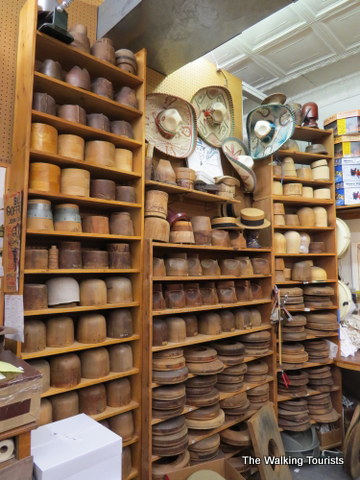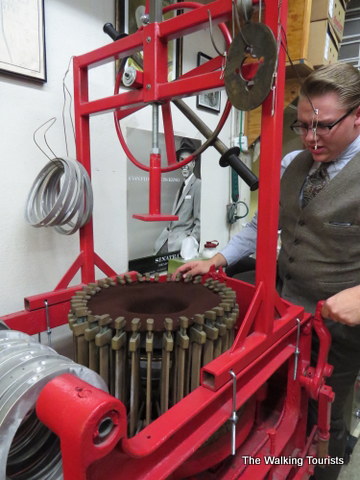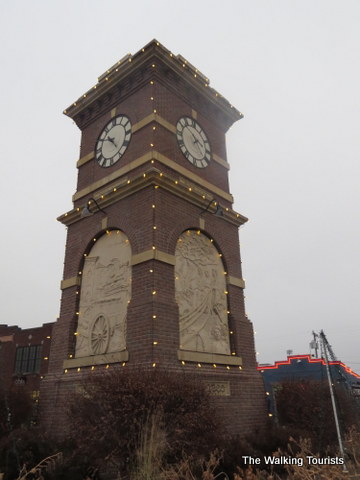Hatman Jack’s adds to Wichita cowpoke lore
The Delano District of Wichita represents the city’s cowboy past. Delano was part of the famed Chisholm cattle trail in the 1960s.
As most people know, cattle were driven by cowboys. Cowboys needed a good hat. And they still do. Hatman Jack’s is appropriately positioned in Wichita’s Delano district, along the Chisholm Trail.
Hatman Jack’s opened in 1976 by Jack Kellogg. Kellogg has become known as the “Hatman to the Stars.” He has fitted or custom-made hats for celebrities such as BB King, Mickey Mantle, Harry Connick Jr., Charlie Daniels and classical singer Luciano Pavarotti. He has even fitted hats for TV shows and movies, including “Dr. Quinn, Medicine Woman” and “The Quick and the Dead.”
But, the hattery’s main clientele includes actual cowboys from Kansas’ Flint Hills region. Other regular clients include lawyers, doctors and the average person off the street.
The store features some handmade hats, plus more than 20 brand names that can be purchased off the rack, including Stetson.
Hundreds of hats filled the two bays of the store. The second bay was added several years ago. The first bay had mostly cowboy hats, while the second bay had fedoras, women’s hats and other hats.
The Hatman is good at distressing a cowboy hat, if needed. The hat is worked to give it a used look, even though it’s new. The one we saw was really impressive.
Austin, one of the sales clerks with the store, gave us a tour of the back of the store. Austin, a young man with an old soul, fits the role of a hattery – well dressed with respectful manners. He can recite hat types, as well as what hat style goes with what face structure. He is an amazingly knowledgeable young man.
We learned that hats are made from rabbit or beaver pelts.
The store has a collection of hat bowls and stretchers that range from the 1890s to the 1940s.
Austin displayed a hat steamer for us. A steamer is used to help the hat maker style the hat for the end-user. The hatter can put in the style on the bowl. It was interesting.
A hat cleaner holds a hat in place while it rotates, allowing the hat maker to clean a hat and keep the felt moving in the correct direction.
We really enjoyed our visit with Austin and the staff at Hat Man Jack’s. It was a learning experience.
For a guy who wanted to be a cowboy as a kid, I think it’s really cool that the store is on the Chisholm Trail. That just adds to the lore.
I was impressed knowing that more than 150 years ago, cattle roamed the street in front of the store.
The area was truly part of history.
As the Chisholm Trail ended one prong of the trail in Wichita, tired cowboys needed some rest and relaxation. Saloons and brothels were abundant in the area. The cowpokes were known as hard drinkers and partiers. Fights erupted often. And not just between the cowboys.
Rowdy Joe Lowe and Edward “Red” Beard were two saloon owners, who hated each other. They owned saloons next to each other, according to historicdelano.com. Beard allegedly shot Rowdy Joe in the back of the head, near an ear. It didn’t cause a last injury. In retaliation, Rowdy Joe went to Red’s saloon and shot several customers. Later, Rowdy Joe shot red at close range. Red died from an infection related to the shooting.
As the cattle trails moved westward toward Dodge City, Delano’s role as a rowdy Cowtown passed. The area was eventually annexed by Wichita. As Wichita enjoyed economic growth, the Delano area saw its streets get paved and brick buildings started dotting the landscape.
Eventually, the Delano area became involved in the airplane industry, as several companies formed here or located in the area. Some of them included Cessna and Beech.
Delano’s cowpoke past is commemorated with a clock tower in a roundabout near Hatman Jack’s. The 1865 panel depicts Jesse Chisholm, known for his trading posts along the Arkansas River and leading Native Americans out of the area. The 1870 panel shows cattle being brought into the area. The 1875 section covers the era of lawlessness and vice in Delano. The final panel depicts the 1880s when Delano became a business center as part of Wichita.
The area is currently home to a variety of small businesses.
For more information on the Delano district, please visit www.historicdelano.com.












